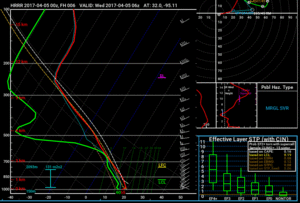Tim Vasquez
EF5
- Joined
- Dec 4, 2003
- Messages
- 3,411
Hey guys, I've been starting to drop in at Stormtrack now that I've gotten a bunch of projects out of the way and severe weather season is finally in the upswing. I don't know how many of you use PivotalWeather but I've been seeing something confusing on there, and I figured if anyone would know the answer it would be you guys

If you check out that image at the bottom right, where STP is broken down, you can see that there are CAPE, LCL, ESRH, and EBWD. Those right there are the core elements of STP, so no problem there. However it then goes on to list STPC and STP_fixed. Does anyone know what this is referring to? I Googled around and can't find any references to this except some SHARP Python code that unfortunately isn't commented.
Thanks all.

If you check out that image at the bottom right, where STP is broken down, you can see that there are CAPE, LCL, ESRH, and EBWD. Those right there are the core elements of STP, so no problem there. However it then goes on to list STPC and STP_fixed. Does anyone know what this is referring to? I Googled around and can't find any references to this except some SHARP Python code that unfortunately isn't commented.
Thanks all.
